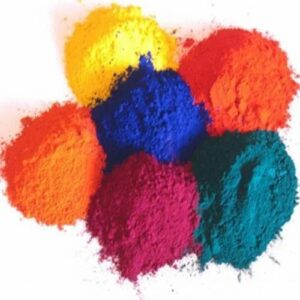Textile Dyeing Chemicals
Textile dyeing chemicals are essential components in the textile industry, used to impart color to fabrics and fibers. These chemicals play a crucial role in achieving the desired aesthetic and functional properties of textiles. They are utilized in various dyeing processes, including batch dyeing, continuous dyeing, and printing. The choice of dyeing chemicals can significantly affect the final product’s color fastness, shade accuracy, and overall quality.
Uses of Textile Dyeing Chemicals
- Coloring Fabrics: The primary use of dyeing chemicals is to add color to textiles, enhancing their visual appeal.
- Improving Color Fastness: Certain chemicals help improve the resistance of dyes to washing, light, and rubbing, ensuring longevity.
- Enhancing Fabric Properties: Some dyeing agents can also impart additional properties such as water repellency, flame resistance, or anti-static characteristics.
- Environmental Compliance: Many modern dyeing chemicals are designed to be eco-friendly, reducing the environmental impact of textile production.
Technical Data
| Property | Description |
|---|---|
| Chemical Type | Reactive, Acidic, Basic, Direct, Disperse, etc. |
| Application Method | Batch, Continuous, Printing |
| pH Range | 4.5 – 9.0 |
| Solubility | Water-soluble, Oil-soluble |
| Temperature Range | 20°C – 100°C (depending on dye type) |
| Color Fastness | Varies by dye type (e.g., 4-5 for washing) |
| Toxicity | Varies; some are eco-friendly, others may require safety precautions |
| Storage Conditions | Cool, dry place away from direct sunlight |
Key Points
- Versatility: Textile dyeing chemicals can be used on a wide range of materials, including cotton, wool, polyester, and blends.
- Innovation: The industry is continuously evolving, with new formulations being developed to meet the demands for sustainability and performance.
- Regulatory Compliance: Many dyeing chemicals must comply with international regulations regarding safety and environmental impact, such as REACH in Europe.
In summary, textile dyeing chemicals are vital for the textile industry, providing not only color but also enhancing the performance and sustainability of fabrics. Understanding their properties and applications is essential for manufacturers aiming to produce high-quality textile products.

